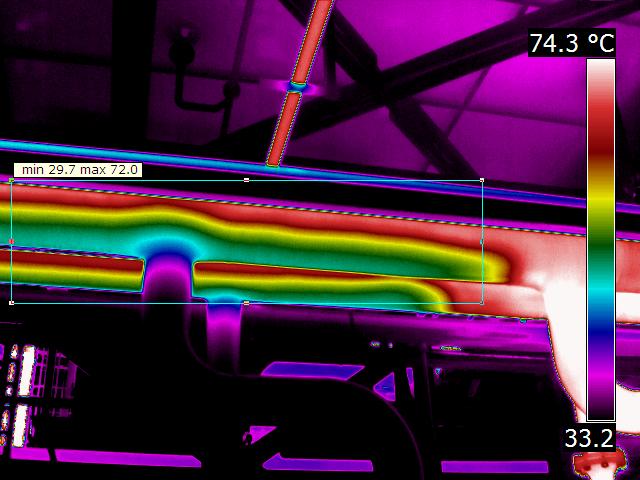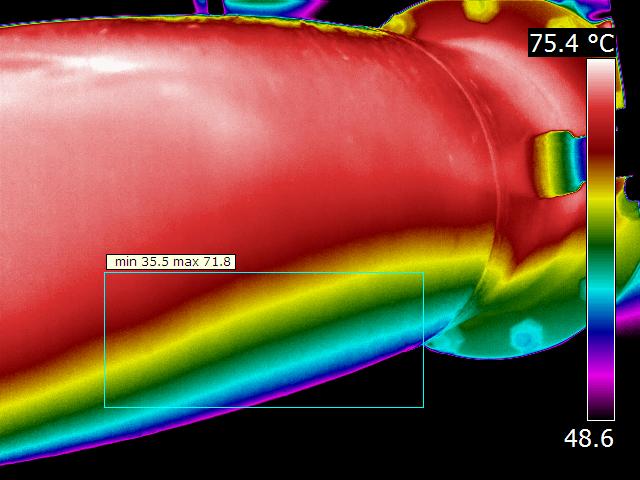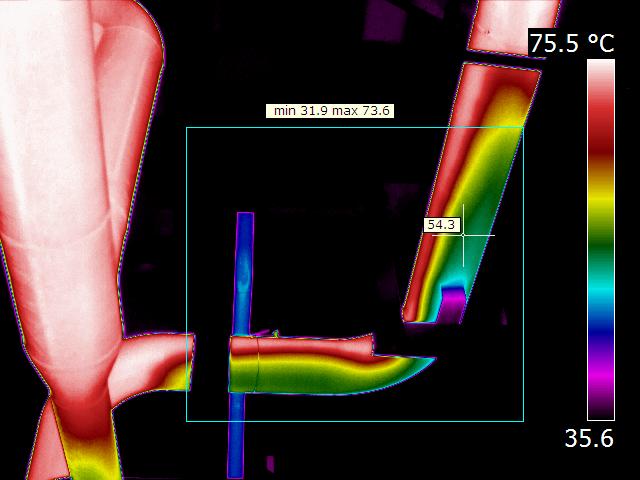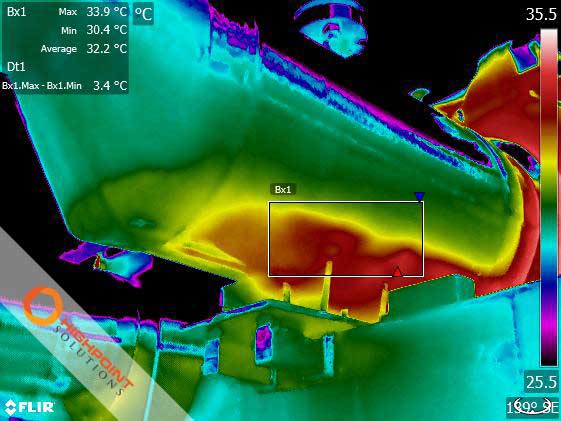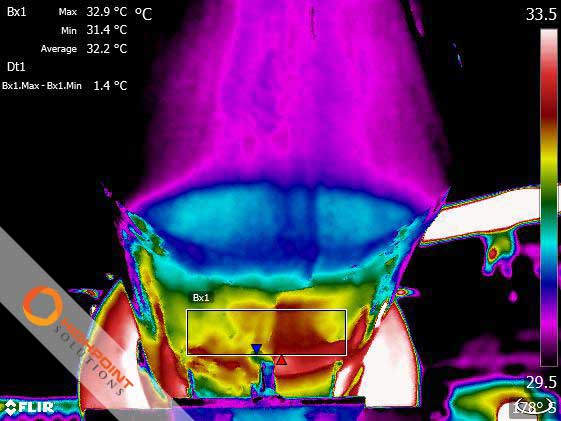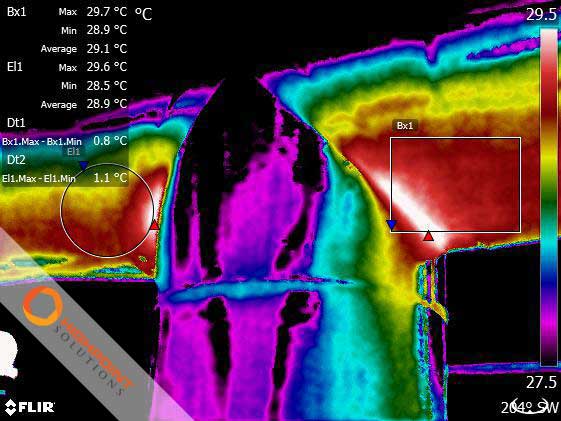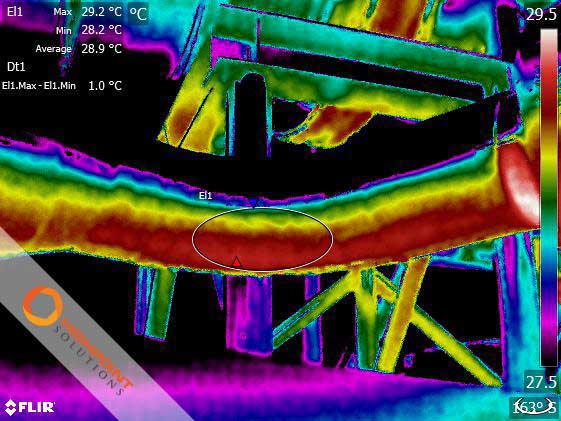
Australian Oil & Gas Thermal Imaging Services
Oil & Gas Thermal Imaging Applications
Thermal imaging is widely used in the oil and gas industry to identify potential problems that the human eye simply cannot detect. The non-invasive, non-destructive inspection method has proven to significantly increase asset safety, saving onshore and offshore oil and gas companies millions of dollars in rig and installation production downtime. Thermal imaging technology is used throughout the oil and gas industry in a diverse range of applications for both predictive maintenance and condition monitoring (CM) including:
- Sand level evaluation in tanks and vessels
- Gas leak detection
- Pipe integrity
- Corrosion Under Insulation (CUI) inspections
- Flare header line inspections
- Insulation inspections on LPG/LNG holding tanks
- Cathode protection assessments
- Optical gas imaging
- Electrical thermography
- Moisture ingress in pipe lagging
Why Use Us For Your Thermal Imaging Needs?
- Save time by using an inspection method that covers a lot of ground in a short amount of time
- Save significant time in plant or production downtime
- Save resources
- We are ITC professionally trained Thermographers with many years experience in the oil and gas industry
- We do not compromise safety!
Sand Level Vessel & Tank Inspections
Certain tanks and vessels suffer from the build-up of sand deposits which sometimes makes it challenging, not knowing when to shut the system down and open up the vessel for cleaning. Using infrared technology, our experienced thermographers can evaluate the sand deposit level quickly and easily with higher accuracy than any other non-invasive method. Trending reports from periodic inspections are then generated and tracked over time. Each of the thermographic reports supplied will include 4 of the previously imaged inspection points, allowing your process engineers to quickly understand the problem and organise sand and sediment removal in the next planned shut down window.
Benefits of Sand Level Inspections
- High thermal resolution 640x480 pixel images (1280x960px using Ultramax)
- 45 degree germanium lens used to capture a large footprint in one image
- ITC certified thermographers with real oil and gas experience
- Laser range-finder measurements used to aid in consistent and accurate thermal images
- Comprehensive reporting and trending of sand/sludge levels between inspections
- Quantitative and qualitative analysis with 48hr report turn-arounds
Oil & Gas Thermographic Surveys
As a rule of thumb, electrical and mechanical thermographic surveys are best undertaken while plant or equipment is operational at a 40% minimum load. Examples of historical thermographic surveys include:
- Live inspection detecting loose bus-bar fittings
- Identifying load imbalances, failing fuses and loose terminal block connections
- Evaluate equipment experiencing misaligned drive shaft issues
- Identification of passing valves in high pressure process pipework
- Identification of poorly fitted bolts on pipe flanges
- Monitor bearing temperature on mud pump shafts during high pressure pumping
Types of Gas Leaks Detectable
Benzene
Ethanol
Ethylbenzene
Heptane
Hexane
Isoprene
Methanol
MEK
MIBK
Octane
Pentane
1-Pentene
Toluene
Xylene
Butane
Ethane
Methane
Propane
Ethylene
Propylene
Process Pipe Integrity
Weld Integrity and qualitative assessment
Detect metal fatigue and pipe wall thickness
Identify scale buildup
Corrosion detection
Protecting Oil and Gas Infrastructure
Understanding why pipes fail and blockages
Data visualization
Our Thermography Equipment Specifications

Infrared Camera: FLIR T660
The FLIR T660 is one of the most extensive and advanced thermal imaging cameras available with several convenient features such as a tillable lens, wi-fi connectivity and much more.
Features:
UltraMax - allows you to generate reports with images that have four times as many pixels, and 50% less noise, so you'll be able to zoom in on smaller targets and measure them more accurately than ever.
Its infrared resolution is the highest of its class, at 640 X 480 pixels it offers greater accuracy and readability from greater distances
A thermal sensitivity of <0.02°C to enable quick and accurate imaging of targets
An optimized temperature range of -40°F to 3,632°F (-40°C to 2,000°C)
New higher resolution digital camera with a 5 megapixel detector and LED lamps
A large 4.3" LCD touch screen with efficient on-screen report
Wi-Fi connectivity allows to send data to smart phones and tablets and now even personal computers
More measurement tools allow for a total of 10 measurement spots and 5 box areas
An ergonomic tilting lens that allows a 120° rotation for more comfortable operation
Bluetooth communication lets your link and store moisture and clamp meter reading wirelessly to your camera
Thermal fusion and picture-in-picture allow you to see both visible images and infrared thermal images side by side, or blended as one for better depictions
Capable of creating MPEG4 non-radiometric infrared or daylight video recording
Realtime video frame rate
Capable of streaming MPEG4 videos over Wi-Fi
FLIR T660 Specifications:
IR Resolution (Array Size): 640 x 480
Thermal Sensitivity: < 0.02°C
Field of View: 45°
Temperature Range: -40 to 3,632°F (-40 to 2,000°C)
Accuracy: ±1% or 1°C
Measurement Modes - 6 Modes: Center Spot; Hot Spot (Box Max); Cold Spot (Box Min); No Measurements; User Preset 1; User Preset 2
Focus: Manual, Automatic and Continuous
Display Screen: 4.3"/Landscape (Widescreen)
Touchscreen: Yes
Visual Camera: 5MP
Digital Zoom: 2X, 4X, 8X
Image Fusion: Yes
Memory Storage2 GB SD Memory Card
Video Output: Yes
LED Illuminator: Yes
Laser Pointer: Yes
Video Recording: Yes
Annotations: Yes
Wireless Meter Connect: Yes
Wi-Fi Connectivity: Yes
Thermal Imaging for Corrosion Under Insulation
Corrosion Under Insulation Inspections
Corrosion Under Insulation (CUI) can be extremely hazardous in the oil and gas industry. Tanks, vessels and pipework contain highly volatile gases and liquids which if leaked could trigger a catastrophic event.
Utilising thermal imaging to locate potential areas of corrosion under insulation, we can bring to attention areas where CUI is likely to form. Highpoint Solutions provides world-class thermographic solutions for pipeline condition monitoring, along with detailed testing and inspections to evaluate the integrity of insulated pipelines, vessels and storage tanks.
Pipeline Applications for CUI Inspections
Internal corrosion
Weld-line identification
External corrosion
Heat affected (HAZ) corrosion
Changes in pipe schedule
Pipe blockages
Wet insulation
Determination of product level in piping


